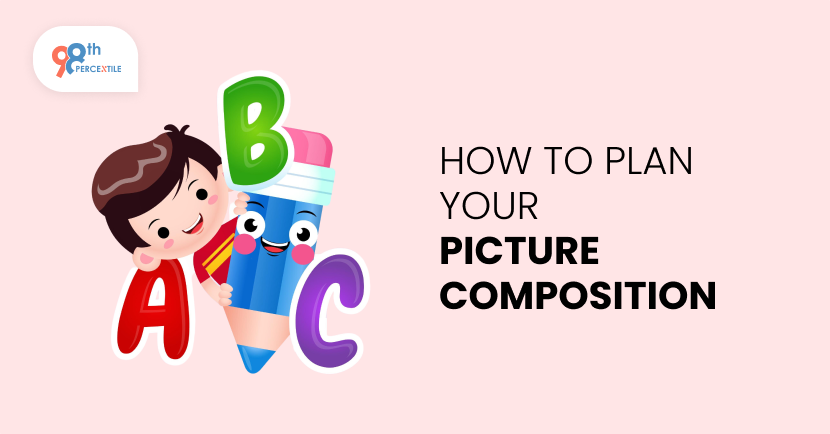Have you ever found your child immersed in thoughts while looking at a picture? Do you feel that even after realizing the beauty of a picture your child finds it difficult to express their thoughts in words? Yes, right? Don't worry we will guide you through some amazing tips and hacks to make your child excel in writing picture composition.
Every picture holds millions of emotions. A strategic approach to understanding the picture and planning to compose the hidden stories behind the picture can transform your child into a proficient picture composition writer. By the end of this article, your child will learn how to uncover the stories and articulate their thoughts.
Download FREE English Worksheets!
Steps To Follow While Writing Picture Composition
Expressing your thoughts from pictures to compel readers to believe in your idea can be challenging. However, following the right strategy can improve your writing to give readers a clear and deep understanding of your point of view. Follow the below-given steps to start writing a picture composition.
-
Study the picture thoroughly: Try to study the picture. Focus on every element of the picture to find clues about the hidden messages.
-
Try to set a point of view: Try to explore different points of view and emotions related to the picture. Cluster an overall summary of diverse ideas.
Plan a Writing Strategy
- Write an interesting and attractive introduction to the picture that will help to hook the readers.
- In the explanation or the body part, include a brief and clear explanation of the elements of the pictures and what they resemble according to you. Try to give a compelling explanation of your idea to make readers believe in your narration.
- At the end, summarize your ideas, advice if any with an ending conclusion.
Key Points To Remember
- Always take adequate time to visualize the entire scenario related to the picture.
- Try to find the emotions the picture tries to express.
- Try to outline before starting to write.
- Try to make the writing engaging and interesting.
- Keep a habit of looking into pictures or in general any situations with a thoughtful vision.
- Practice makes everything possible. Try to write as many picture compositions as possible.
- Alongside creativity, always try to focus on grammar and vocabulary to improve your content.
- Keep your content relevant to the picture.
Well done, you have now understood how to plan your picture composition to beat any picture composition writing challenge. To learn more about English, mathematics, coding, and public speaking, visit the 98th Percentile website, the leading online learning platform to transform your child’s academic journey into excellence.
FAQs ( Frequently Asked Questions)
Q1: How do you write a picture composition?Ans: To write a picture composition, the first step is to understand the picture and the formation of ideas related to the picture.
Q2: What is a picture composition assignment?Ans: A picture composition assignment is a technique to check student’s comprehension and visualization capabilities.
Q3: Why should children write picture compositions?Ans: Writing picture composition involves studying the contents of a picture and articulation of ideas related to the picture. This help in the improvement of student’s cognitive development and language proficiency.
Q4: How do you assess a picture composition?Ans: To assess a picture composition, it is important to focus on the relevancy of the content and creativity.
Q5: What is picture composition writing for primary-grade students?Ans: Primary-grade students are also required to learn picture composition writing as a part of their academics. Primary students are given simple pictures to write a composition about that picture.
Book FREE English Trial Classes Now!

 Students/Staff
Students/Staff Parents
Parents ElevatEd
ElevatEd














